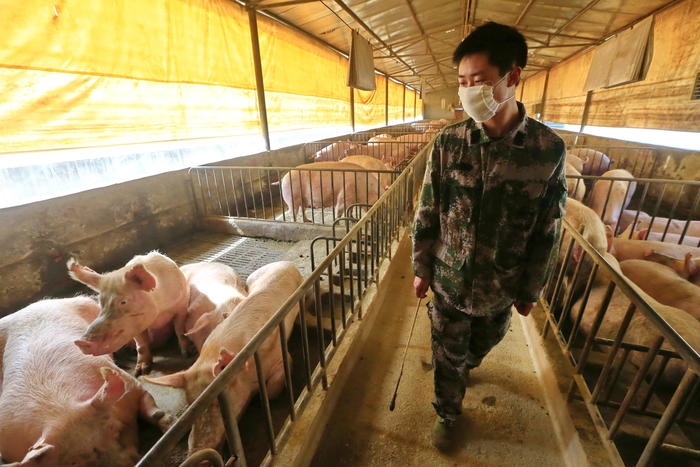A Pandora's box: experts have no doubts in defining the continuous emergence of new viruses, like collages of genetic fragments that in some cases can become a threat to humans. The latest addition is the newly discovered G4 EA H1N1 virus in China, a distant relative of the virus responsible for the H1N1 virus that caused the 2009 pandemic which, after adapting to humans, returned to the pigs: a tortuous path that eventually produced a new virus, apparently similar to others seen in the past but against which old vaccines do not work. It's an old story, as anyone who studies the boundless world of viruses knows. Those of the flu are the most common and insidious, but from 2003 to the Covid-19 pandemic we learned about coronaviruses and other viruses still born and are modified in other animals. Chikungunya, Ebola, Marburg, Nipah, Zika are only the best known. In this multitude, which insiders call the virosphere, influenza viruses such as the one just discovered in China are the most frequent. In particular "the viruses of the H1N1 family are the result of a great cauldron of rearrangements of different viruses in different animals", observes the infectious disease specialist Massimo Galli, of the University of Milan and head of the Sacco hospital. "Until - he adds - a virus capable of spreading from man to man is extracted from the deck. The natural test tubes in which these viruses mix their genetic heritage are pigs, but recently it has emerged that bats also make their contribution. Wanting retrace the genealogical tree of the new virus discovered in China, its distant relative is even the Spanish H1N1 virus, highlighted in 2009 in a very different guise: a sort of genetic Harlequin that he had in himself, observes the expert, American and Eurasian H1N1 pig viruses mixed with a fragment of the bird virus and a human virus. "What Chinese researchers have found is a virus that has changed dramatically over time and that today - he continues - has also been found in farm workers, especially between the ages of 18 and 35 and it has been seen that it is not transmitted from man to man. "It is possible, he notes, that" if it came up it would not bother us ", but "we wouldn't have a vaccine and we should schedule one."
New virus in China is not alone, others are feared
2020-07-02T04:56:48.545Z

From pigs to mosquitoes the new tanks, such as Pandora's boxes (ANSA)A Pandora's box: experts have no doubts in defining the continuous emergence of new viruses, like collages of genetic fragments that in some cases can become a threat to humans. The latest addition is the newly discovered G4 EA H1N1 virus in China, a distant relative of the virus responsible for the H1N1 virus that caused the 2009 pandemic which, after adapting to humans, returned to the pigs: a t...






